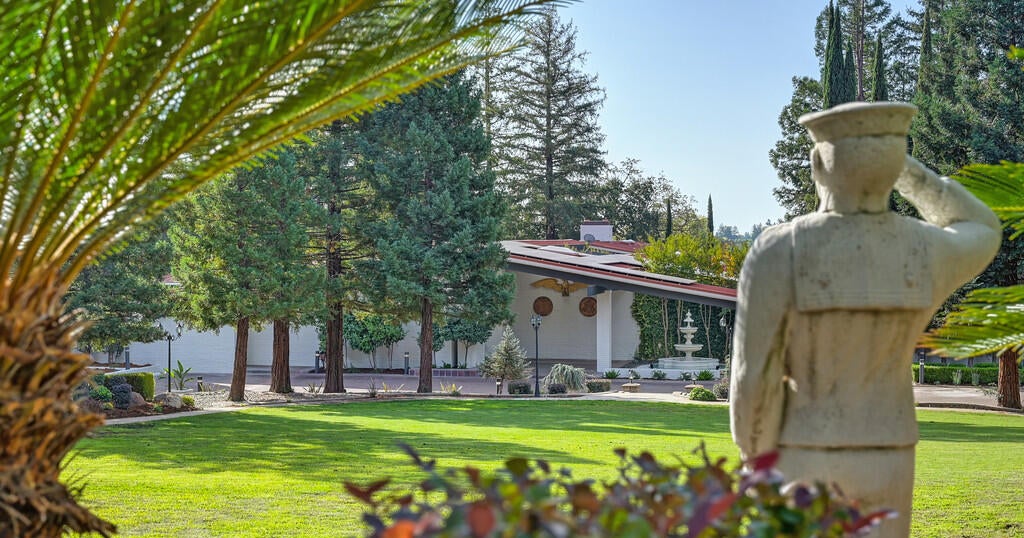Uncommon Knowledge
Newsweek is committed to challenging conventional wisdom and finding connections in the search for common ground.

California’s plan to ban carbon-producing trains from operating in the state beginning in 2035 has come under fire from critics, with a major rail industry body claiming it would be “devastating” to “the critical efficient functioning of the national freight rail network.”
In April 2023, the California Air Resources Board (CARB) adopted an In-Use Locomotive Regulation that would require all trains operating in the state to be zero emission by 2035, while diesel locomotives build more than 23 years ago would be banned starting in 2030, in a bid to combat climate change. In order to take effect, the new rules must also be approved by the federal Environmental Protection Agency (EPA), which has yet to take place.
The past few years have seen an explosion in the electric vehicle industry as governments and manufacturers across the world attempt to contain the impact of climate change. This has also turned attention to rail transport in the U.S., the vast majority of which is diesel-powered, though an all-electric high-speed railway connecting Los Angeles and San Francisco is under construction.
Smith Collection/Gado/GETTY
In its submission to the EPA the CARB claims the proposed Locomotive Regulation would “prevent approximately 3,200 premature deaths, 1,100 hospital admissions and 1,500 emergency room visits in California” if it takes effect. The CARB also claimed there are 21 areas in California that currently fail to meet federal air-quality standards, which it said the new rules would help to address and said this disproportionately impacts citizens who “live in low-income and disadvantaged communities.”
However, a number of rail industry bodies, companies and politicians have submitted evidence to the EPA urging it to reject the CARB’s plan.
The American Association of Railroads, a trade association for the North American freight industry, said: “The railroad industry is invested in reducing emissions from locomotives as quickly as realistically possible, while protecting the critical efficient functioning of the national freight rail network.
“CARB’s In-Use Locomotive regulation…will be devastating to the latter and will in fact set back progress toward the former.”
The Rail Customer Coalition, which represents a range of companies involved in the rail industry, warned the plan would “impose significant financial burdens on railroads” which it said “may be untenable for some short line railways.”
Consequently, the proposal “could create additional supply chain disruptions and negatively impact large segments of the economy, including manufacturers, farmers, and energy producers.”
The CARB’s plan was also condemned in a joint letter from a range of farming groups that operate in the Golden State, including the Agricultural Council of California and the California League of Food Producers.
They said: “As agricultural stakeholders especially reliant on efficient and affordable rail transportation, we believe the regulation is unworkable and will negatively affect our ability to bring vital California goods to market.”
Westinghouse Air Brake Technologies, one of the largest train manufacturers in the world, noted locomotives usually have a lifespan of at least 30 years, meaning the CARB proposal would force operating companies to retire perfectly serviceable trains.
In an article titled California May Break the Freight-Rail Network, the Bloomberg editorial board was also critical of the plan, noting that “the mandatory new technology doesn’t exist” with no zero emission locomotives currently past “the prototype phase.”
They also said that “even if an operative one appeared tomorrow, getting such trains on the rails would require huge new investment — not least in electrical-distribution infrastructure, across every type of topography — that is largely outside the railroads’ control.”
Newsweek contacted the California Air Resources Board for comment by email on Wednesday outside of normal business hours.
Newsweek is committed to challenging conventional wisdom and finding connections in the search for common ground.
Newsweek is committed to challenging conventional wisdom and finding connections in the search for common ground.


CALIFORNIA (AZFamily) — The mother of a missing California girl has been arrested on charges unrelated to her daughter’s disappearance, but the child still has yet to be found.
FBI Los Angeles announced that 40-year-old Ashlee Buzzard was taken into custody on Friday. However, the whereabouts of her daughter, 9-year-old Melodee Buzzard, remain unknown.
Melodee and Ashlee reportedly went on a road trip as far as Nebraska in a rental white Chevrolet Malibu last month, detectives say. Federal authorities say Melodee and her mother may have passed through Interstate 15 in Littlefield, Arizona while on the drive.
Detectives say Ashlee was arrested for a recent incident where she allegedly prevented a victim from leaving against their will. Authorities say this crime is not connected to the ongoing search for Melodee.
“Although this arrest occurred during the course of the missing person investigation, it is not directly related to Melodee’s disappearance. Sheriff’s detectives remain fully focused on locating Melodee and confirming her safety,” FBI Los Angeles said in a statement.
Ashlee was booked for a felony charge of false imprisonment. She is being held at a jail in Santa Maria, California, with bail set at $100,000.
Melodee was photographed at a rental car agency on Oct. 7, wearing a wig and a hoodie.

The young girl has brown eyes and brown, curly hair that may be straightened or covered with a dark wig. She is between four and four-and-a-half feet tall, weighing between 60 and 100 pounds.
Anyone with information about Melodee is asked to contact detectives at (805) 681-4150 or submit an anonymous tip at (805) 681-4171.
See a spelling or grammatical error in our story? Please click here to report it.
Do you have a photo or video of a breaking news story? Send it to us here with a brief description.
Copyright 2025 KTVK/KPHO. All rights reserved.

A Carmichael home that was originally designed to be California’s official Governor’s Mansion is now up for sale.
The mid-century modern home, located at 2300 California Avenue, was built in 1975 after being commissioned by Ronald and Nancy Reagan to replace the aging governor’s mansion at 16th and H streets in Sacramento.
By the time construction was finished, Reagan had already left office. His successor, Jerry Brown, declined to move in – famously dismissing the Carmichael residence as the “Taj Mahal.”
No California governor ever called the mansion home, with the property being sold to a private citizen in 1983.
A time capsule installed at the property recognizes the home’s history. The capsule is scheduled to be opened on July 4, 2076.
Now, as of Oct. 16, the Carmichael home has hit the market with a list price of $7.5 million. The property spans 4.3 acres that overlook the American River, with the home featuring a total of 8 bedrooms, 8 bathrooms, and 2 half bathrooms.
“You can really feel the history here,” said realtor Hattie Coleman in a statement.
The Carmichael home last sold in 2004 for $4.1 million.
The East Sacramento home Reagan lived in for much of his time as California governor was designated as a historic landmark in 2024.

Officials announced Thursday that Los Angeles County has automated the process of notifying law enforcement agencies when people who violate restraining orders fail to comply with judges’ orders to hand their guns over to authorities.
Previously, court clerks had to identify which of the county’s 88 law enforcement agencies to notify about a firearm relinquishment by looking up addresses for the accused, which could take multiple days, Presiding Judge Sergio C. Tapia II of the L.A. County Superior Court said during a news conference.
Now, “notices are sent within minutes” to the appropriate agencies, Tapia said.
“This new system represents a step forward in ensuring timely, consistent and efficient communication between the court and law enforcement,” he said, “helping to remove firearms from individuals who are legally prohibited from possessing them.”
According to a news release, the court launched the platform, which the Judicial Council of California funded with a $4.12 million grant in conjunction with the L.A. County Sheriff’s Department and district attorney’s office, and the L.A. Police Department and city attorney’s office.
The court also rolled out a new portal for law enforcement that “streamlines interagency communications by providing justice partners with a centralized list of relevant cases for review” and allows agencies “to view all firearm relinquishment restraining order violations within their jurisdiction,” according to the release.
The new digital approach “represents a major enhancement in public safety,” Luna said.
“Each of those firearms,” he said, “represents a potential tragedy prevented or a domestic violence situation that did not escalate, a life that was not lost to gun violence.”


Half-naked woman was allegedly tortured and chained in Texas backyard for months by five ‘friends’ who didn’t ‘like her anymore’


Video: Dissecting Three Stephen King Adaptations


Opinion | New York City Mayoral Candidates: Who Would Be Best?


ESPN scoop adds another intriguing name to Seahawks chatter before NFL trade deadline


Add Nick Hundley, Ruben Niebla to list of Padres’ managerial finalists


Commentary: Meme stocks are still with us, offering new temptations for novice and unwary investors


Disneyland Resort lays off 100 people in Anaheim


Virginia school district slapped with complaint alleging new claims in viral trans locker room fight